ARTIFICIAL INTELLIGENCE:
A Comprehensive Analysis of its Evolution, Security and Benefits.
Enhancing IBM Sterling Data Exchange products through AI Capabilities.
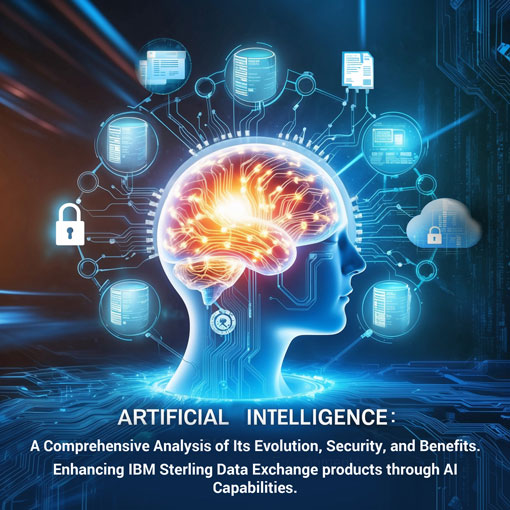
A Comprehensive Analysis of its Evolution, Security and Benefits.
Enhancing IBM Sterling Data Exchange products through AI Capabilities.

Executive Summary
This newsletter outlines how Artificial Intelligence is transforming B2B data exchange, with a focus on IBM Sterling environments. It highlights the exponential growth of AI, its sector-specific impact, and the evolution of trust and security frameworks. B2B Solutions leverages its deep expertise in Sterling products and AI technologies to deliver intelligent solutions that reduce costs, accelerate deployment, and enhance operational resilience. For technical teams seeking to modernise their integration landscape, this is a roadmap to scalable, secure, and explainable automation.
1. Introduction
Artificial Intelligence (AI) has experienced exponential growth over the past decade, transforming multiple sectors and improving efficiency and decision-making capabilities across various areas. This progress has not been accidental, but rather the result of a convergence of fundamental factors that have catalyzed its
exponential development. This report explores the advances in AI, its drivers, its evolution across sectors, how initial security concerns have been addressed, the benefits obtained through its implementation, and finally how to boost IBM Sterling Data Exchange products through B2B Solutions based on Artificial Intelligence.
2. Evolution of Artificial Intelligence
The accelerated progress of AI is mainly due to the following drivers:
1. Increase in Computational
Power. The exponential growth of computational capacity driven by the development of specialized
GPUs and parallel processing architectures has enabled the training of models with unprecedented complexity. NVIDIA, for example, has seen the
performance of its AI GPUs grow more than 1000 times over the past ten years.
2. Explosion of Available Data
The rise of Big Data has provided vast datasets to train AI algorithms. It is estimated that 90% of all global data has been generated in the last two years, providing the necessary fuel to train increasingly sophisticated algorithms.
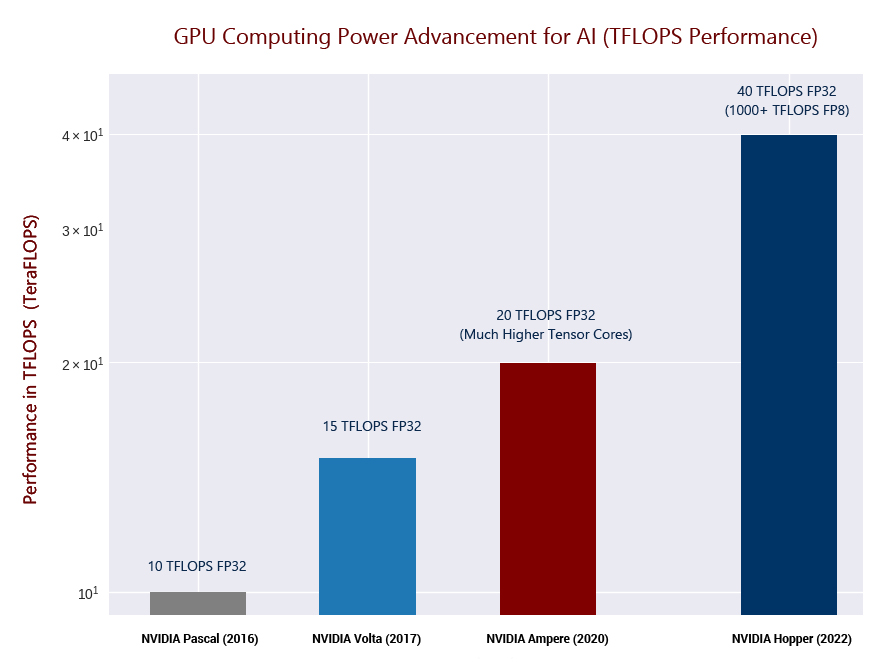
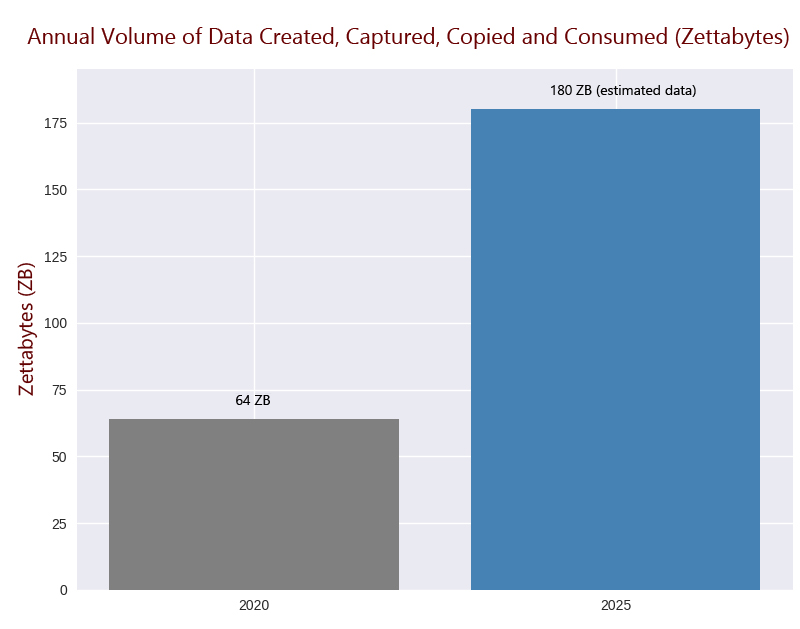
3. Algorithmic Advances
Particularly in deep neural network architectures such as transformers, have
revolutionized the ability of systems to process and understand complex information.
4. Investment and Policy
Increased investment from both the private and government sectors in AI
research and development.
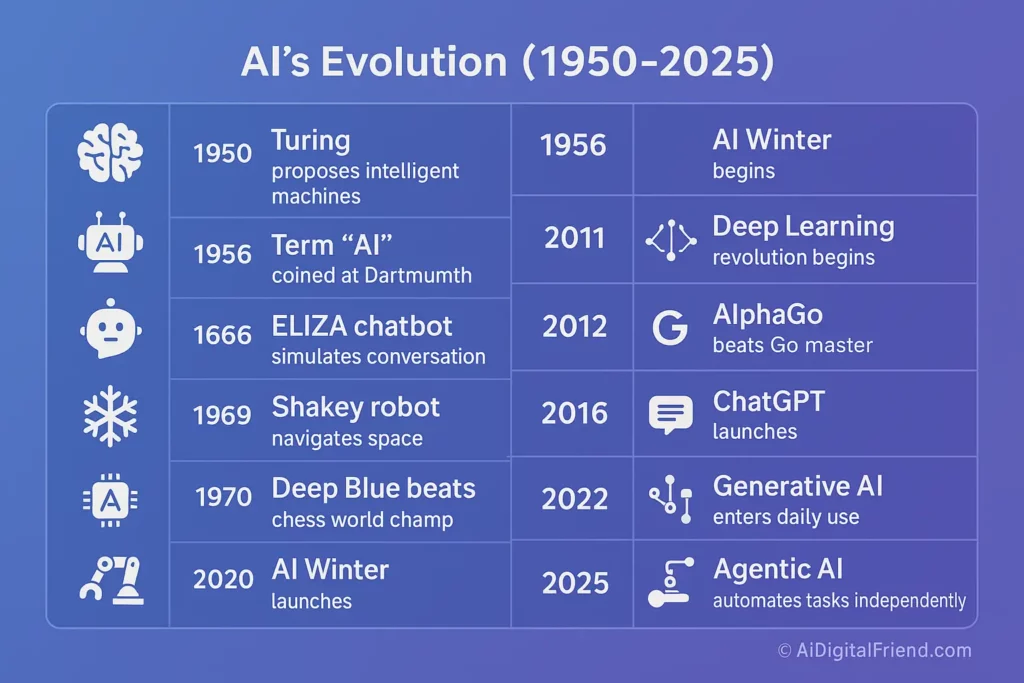
Source: AI Digital Friend
2.1. Key Factors in AI Advancement
1. Machine Learning and Deep Learning
2. Natural Language Processing (NLP)
3. Robotics and Automation
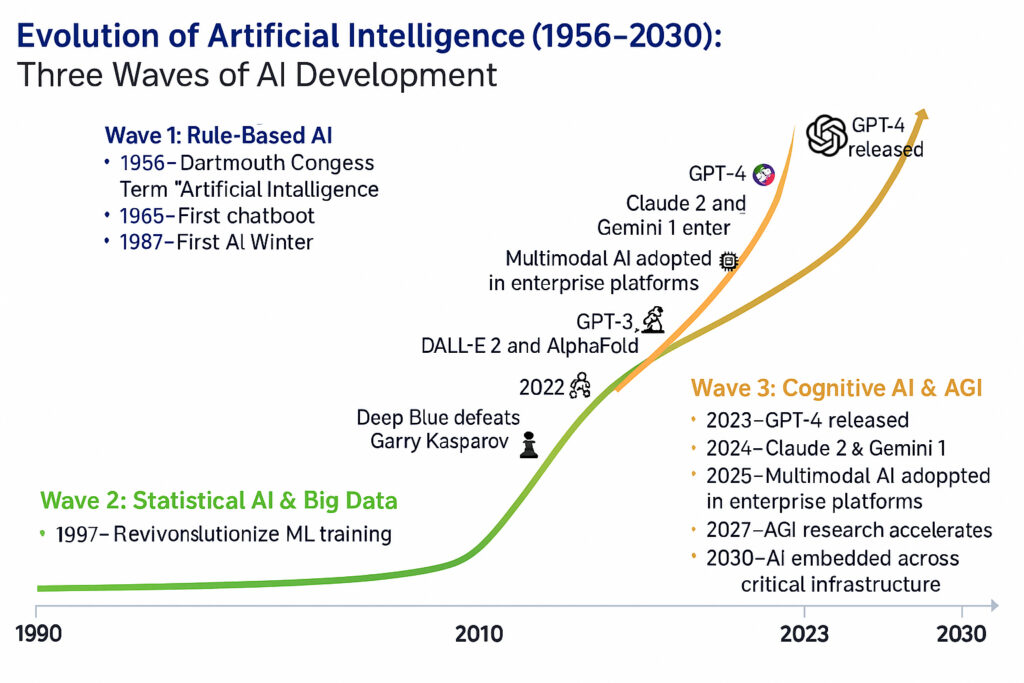
Artificial Intelligence has evolved through three distinct waves—from rule-based systems to statistical
models, and now toward cognitive reasoning and AGI. This timeline highlights key milestones that have
shaped the field, accelerating innovation across industries. As we move into 2030, AI is no longer
experimental—it’s foundational.
2.2. Evolution by Sector of Activity
Healthcare Sector:
AI has radically transformed medicine, from diagnosis to drug development. Computer vision systems can now detect skin cancer with 95% accuracy, surpassing experienced dermatologists. DeepMind’s AlphaFold revolutionized protein structure prediction, solving in two years problems that had puzzled scientists for decades. In pharmaceutical development, companies like Atomwise have used AI to reduce drug discovery time from 10–15 years to just 4–5 years in some cases.
Financial Sector:
Banks and financial institutions have massively adopted AI for fraud detection, risk assessment, and algorithmic trading. JPMorgan Chase reported in 2023 that its COiN (Contract Intelligence) system can review 12,000 commercial contracts in seconds, a task that previously required 360,000 hours of human labor annually. AI-based fraud detection systems have reduced credit card fraud losses by 50–70% according to Mastercard data.
Manufacturing and Industry:
The implementation of AI in manufacturing has led to “smart factories.” Siemens reported that its factory in Amberg, Germany, highly automated with AI, achieved a quality rate of 99.99885%. General Electric uses predictive AI in its wind turbines, increasing energy production by 20% and reducing maintenance costs by 10%.
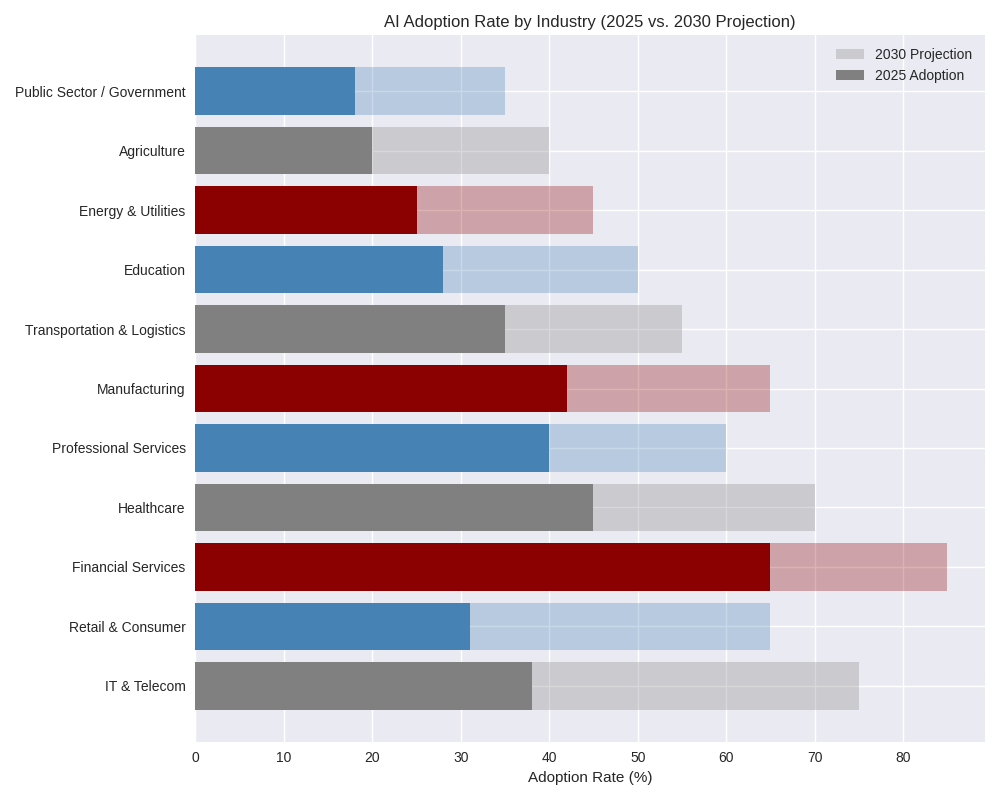
Retail and E-Commerce:
Amazon has revolutionized the sector with recommendation systems that generate 35% of its total revenue. AI-driven personalization has increased e-commerce conversion rates by 15–30% according to McKinsey studies. Walmart uses AI to optimize its supply chain, reducing food waste by 30% and improving product availability by 25%.
Transportation and Logistics:
Route optimization through AI has allowed companies like UPS to save 100 million driving miles annually, equivalent to 10 million gallons of fuel. Assisted driving systems have reduced traffic accidents by 40% in vehicles equipped with these technologies according to NHTSA data.
Automotive: Companies like Waymo have managed to drive millions of miles in real-world conditions with autonomous vehicles, improving road safety.

3. Security and Trust
Initial public distrust toward AI focused on legitimate concerns about privacy, algorithmic bias, transparency, and security. The industry has responded with significant developments on multiple fronts.
In terms of privacy and data protection, techniques such as federated learning allow models to be trained without centralizing sensitive data. Google has implemented this technology in Android, processing data from over one billion devices without compromising individual privacy. The development of differential privacy techniques has allowed companies like Apple and Microsoft to analyze user patterns while maintaining individual anonymity.
To address algorithmic bias, auditing frameworks and bias detection tools have been developed. IBM’s AI Fairness 360 and Google’s What-If Tool allow developers to identify and mitigate biases in their models. The implementation of these tools has reduced gender bias in AI hiring systems by 70% according to
studies from Harvard Business Review.
AI explainability has advanced considerably with techniques such as LIME (Local Interpretable Model agnostic Explanations) and SHAP (SHapley Additive exPlanations), which allow understanding of decisions made by complex models. The financial sector, particularly regulated, has adopted these tools to comply
with transparency requirements in automated credit decisions.
In terms of security, the development of adversarial training techniques and manipulation detection has strengthened the resilience of AI systems against malicious attacks. Microsoft reported that its deepfake detection system can identify manipulated videos with 98% accuracy.
Security and Innovations to Mitigate Distrust
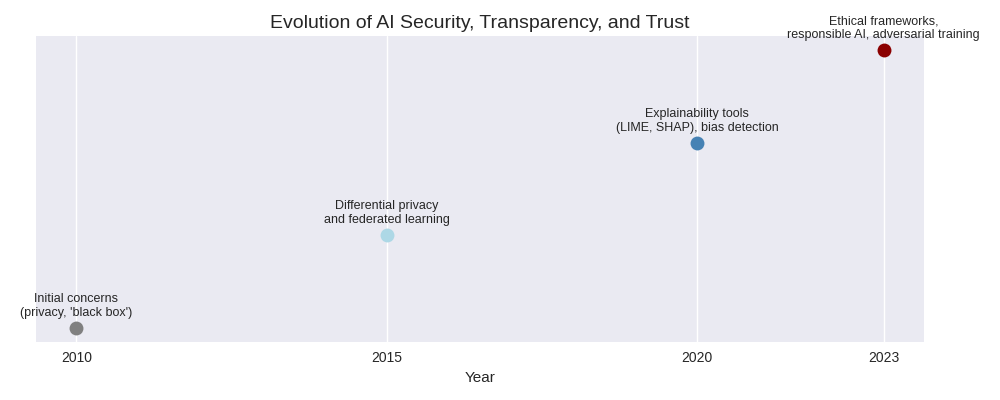
4. Tangible Benefits and Real Figures
The economic and operational impact of Artificial Intelligence is no longer theoretical—it is measurable, scalable, and transformative across industries. According to McKinsey, AI could contribute up to $13 trillion in additional value to the global economy by 2030, representing a 16% increase in cumulative global GDP. This growth is driven by gains in productivity, cost efficiency, innovation, and sustainability.
Operational Efficiency
AI enables organisations to optimise processes, reduce waste, and accelerate decision-making.
Labour Productivity
AI augments human capabilities, automating repetitive tasks and enhancing creative and analytical work.
Sustainability and Energy Efficiency
AI is a key enabler of environmental optimisation and resource management.
Public Health and Early Detection
AI has demonstrated exceptional value in diagnostics, epidemiology, and personalised medicine.
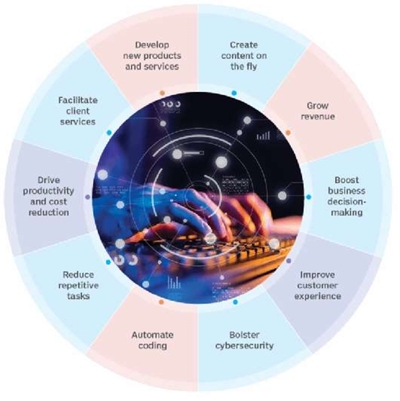
Source: Computer Weekly
Strategic Decision-Making and Risk Management
AI empowers organisations to make faster, data-driven decisions with greater confidence.
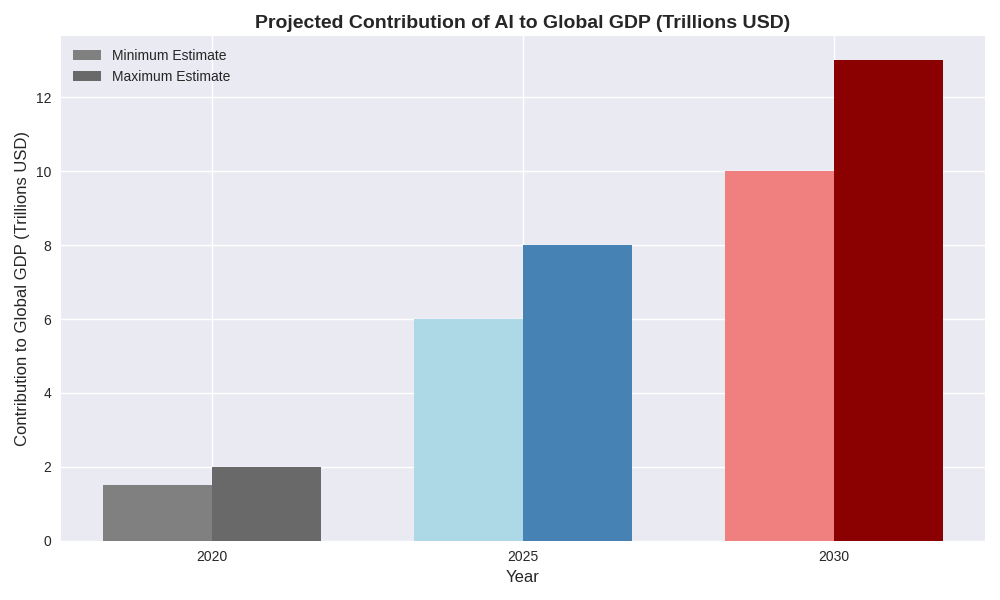
5. AI as a Transformation Engine in Data Exchange
Artificial Intelligence is redefining the way organizations manage their secure data transfer and integration processes.
According to the PwC AI in Financial Services 2024 report, more than 65% of European financial services institutions already use AI in the areas of fraud detection, predictive analytics, and automation of critical operations.
In the scope of Data Exchange, AI makes it possible to:
1. Reduce operation times and system migration.
2. Improve security in real time.
3. Increase resilience to incidents.
4. Automate critical tasks, freeing up resources for higher-value activities.
The combination of IBM Sterling Data Exchange with B2B Solutions’ proprietary solutions makes AI a real enabler of efficiency and security, with tangible benefits for the client, from a technical and functional point of view.
Challenges Faced by Sterling Data Exchange Clients
Before exploring how AI transforms Sterling environments, it’s essential to understand the operational and technical challenges clients face today.
These include:
These pain points often lead to higher operational costs, slower response times, and reduced resilience in volatile markets.
6. Applying AI in IBM Sterling environments: Real-world use cases
6.1. Anomaly Detection and Operational Support
Current limitation: Traditional flow monitoring in Sterling relies on static rules and manual log reviews. This generates false positives and delays the resolution of critical incidents.
B2B Solutions Asset: Sterling B2BAI Administrator

A virtual assistant based on private LLM, trained in IBM Sterling B2B Integrator environments. It allows architects and technicians to interact in natural language with Sterling, automate operations (mailboxes, schedulers, certificates), detect deviations in real time and generate compliance reports.

Technical differential: Native integration with Sterling Control Center Monitor and own visual panel.
Impact: 30–40% reduction in diagnostic and resolution times; less reliance on Level 2 support.
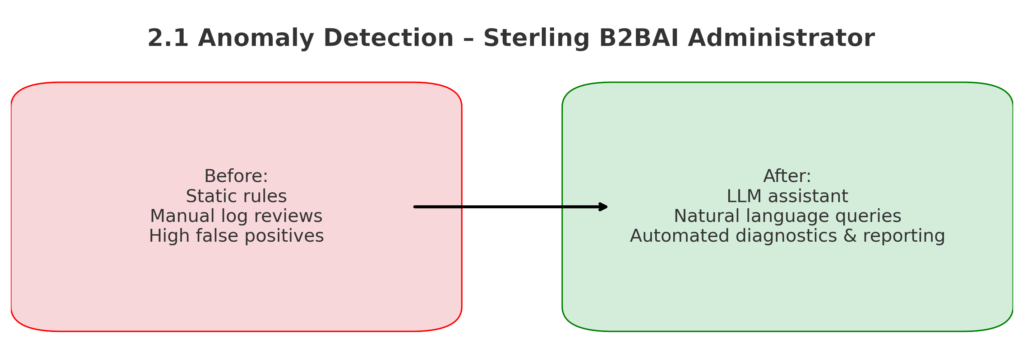
6.2. Accelerated migration of B2B environments
Current limitation: Migrating from legacy platforms (Axway, Seeburger, GoAnywhere) to Sterling B2BI usually requires months of consulting, with high risk of human error and high costs.
B2B Solutions Asset: Sterling B2BAI AutoMigrate

Automatic migration tool that starts from Excel files or export packages from other systems and deploys objects in Sterling with automatic verification. Based on SB2BI’s own capabilities, no additional licenses required.
Technical differential: Verification engine that ensures the correct application of migrated objects; scalable from small projects to large migrations.
Impact: 80% reduction in migration consulting hours; Accelerated ROI.
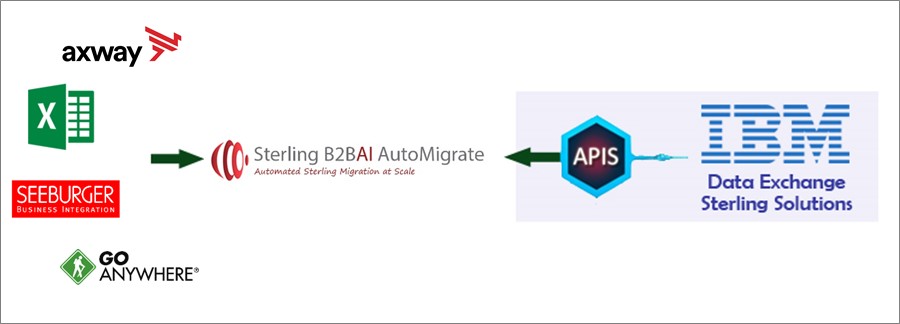

6.3. Intelligent map migration and validation
Current limitation: EDI/XML/JSON map updating or creation is done manually, which implies a risk of error, slow deployment and testing overload.
B2B Solutions Asset: Sterling B2BAI Mapping Assistant

AI that analyzes map specifications, detects common logical patterns, and automatically validates generated files against expected rules and structures.
It includes automatic generation of test cases and traceability for auditing.
Technical differential: Direct integration with repositories and Sterling’s Map Editor without modifying infrastructure.
Impact: Reduced development and testing times by 40–60%; early error validation; guaranteed consistency in large-scale environments.

6.4. Error handling using conversational AI
Current limitation: Log management in Sterling relies on manual analysis by expert technicians, with great time consumption and risk of not detecting complex error patterns.
B2B Solutions Asset: Sterling LogGPT

Natural language log analysis engine, deployed on top of Kubernetes, that connects Sterling environments with specialized LLM models. It facilitates search, interpretation
and diagnosis of incidents, as well as predictive capabilities to avoid future failures.
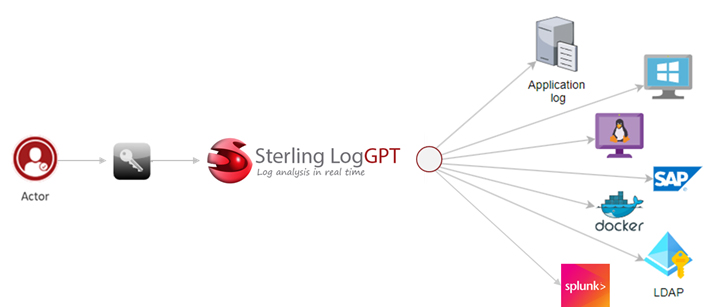
Technical differential: Real-time pattern analysis and predictive support; adaptable to multiple log sources.
Impact: Reduction of MTTR (Mean Time To Repair) by 30–50%; increased stability in critical operations.

6.5. Incident management automation
Current limitation: Sterling Control Center alerts are often handled manually in ticketing systems, delaying response and multiplying errors.
B2B Solutions Asset: Sterling AlertConnect

Natural language log analysis engine, deployed on top of Kubernetes, that connects Sterling environments with specialized LLM models. It facilitates search, interpretation
and diagnosis of incidents, as well as predictive capabilities to avoid future failures.
Technical differential: Use of SNMP traps and multivendor compatibility in ticketing.
Impact: Drastic reduction in manual intervention; acceleration of response time by 40–60%; consistency in incident management.

6.6. AI applied to security and compliance in Data Exchange
Current limitation: Monitoring encryption, certificates, and compliance (GDPR, ISO) often requires manual controls and creates audit risk.
B2B Solutions Assets: – Combined integration (Sterling B2BAI Administrator + Sterling B2BAI Mapping Assistant + Sterling AlertConnect)
A set of capabilities that:
Technical differential: Technical differential: Holistic approach combining generative AI (administration), structural analysis (maps) and alert automation (tickets).
Impact: 40% reduction in compliance reporting times; mitigation of regulatory sanctions.
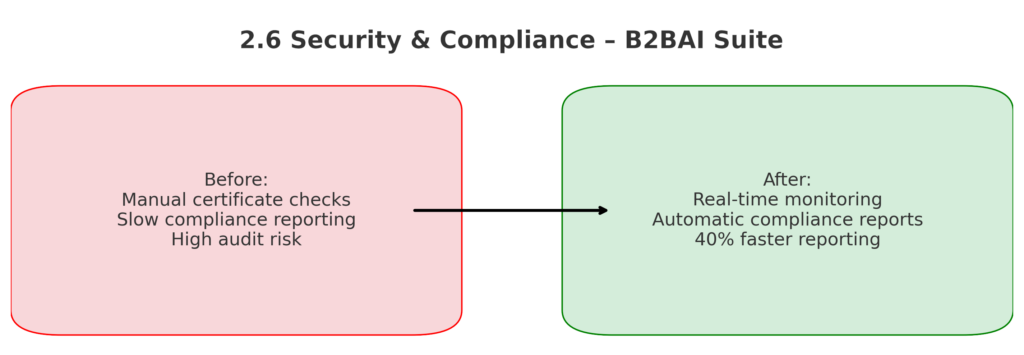
7. The competitive advantage of combining AI + IBM Sterling
Organizations that adopt AI in their Data Exchange environments are able to:
In this scenario, B2B Solutions has invested in R+D to create a unique portfolio of AI solutions integrated with IBM Sterling:
Each of them responds to specific challenges of the technical teams and integration architects, maximizing the investment in Sterling and providing differential value compared to generic market solutions.
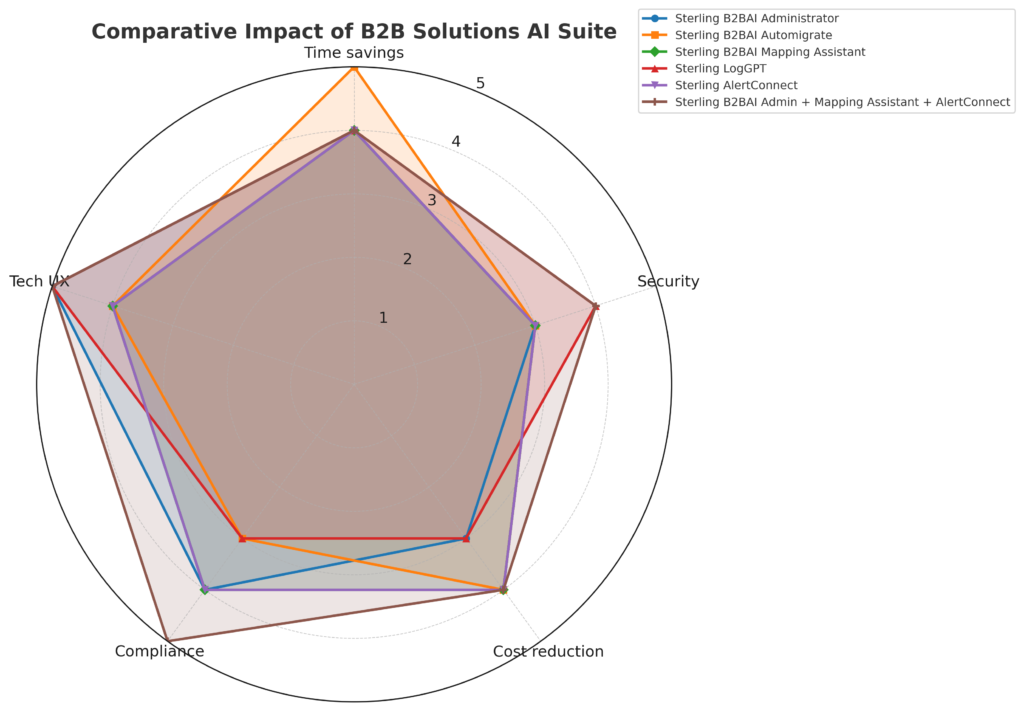
8. Frequently Asked Questions: AI in Sterling Environments
Can AI be safely integrated into Sterling Data Exchange workflows?
Yes. Our solutions use privacy-preserving techniques such as federated learning and differential privacy to protect sensitive data while enabling intelligent automation. In addition, B2B Solutions applies industry best practices in security, compliance and monitoring, ensuring that AI integration meets GDPR and ISO standards without disrupting existing Sterling workflows.
How does AI improve partner onboarding and mapping?
AI-powered tools like Mapping Assistant and AutoMigrate reduce manual effort by learning from historical mappings and automating schema alignment. They also provide automatic test case generation, traceability for audits, and intelligent verification to reduce onboarding times and eliminate common errors.
What impact does AI have on operational efficiency?
AI reduces operating costs by 20–30%, accelerates deployments, and improves data accuracy. Clients report faster incident resolution, proactive anomaly detection, and up to 40–60% improvements in mapping and migration tasks, which translates into tangible ROI.
Does AI add complexity to Sterling environments?
No. All our AI solutions are designed to integrate natively with IBM Sterling products (B2B Integrator, Control Center, MFT) without requiring additional infrastructure or licenses. They extend existing capabilities rather than replacing them, which minimizes risk and adoption time.
How does AI enhance security and compliance?
By combining tools like Sterling B2BAI Administrator, Mapping Assistant, and AlertConnect, our solutions monitor certificate validity, encryption robustness, and compliance in real time. They also generate automatic audit documentation, reducing reporting time by 40% and mitigating regulatory risks.
What support does B2B Solutions provide after AI deployment?
We offer Hypercare support, expert maintenance, and managed services, ensuring continuous optimisation, updates, and proactive monitoring of AI-driven Sterling environments. Our certified IBM Sterling specialists guarantee long-term performance and cost efficiency.
9. Next Steps: How to Engage With Us
Whether you’re exploring AI integration or actively modernising your Sterling environment, we offer tailored support:
10. Conclusions
Artificial intelligence has made remarkable progress, offering innovative and efficient solutions to complex problems across multiple sectors. As security and ethical technologies continue to evolve, the adoption of AI will keep growing, driving substantial economic and social benefits. The key to maximising these benefits lies in a balanced approach that fosters innovation while ensuring public trust.
B2B Solutions focuses entirely on IBM Sterling Data Exchange solutions. The company’s deep understanding of these products and the needs of a complex market is combined with its momentum in technological innovation and Technical Maturity—engines for the creation of Intelligent Solutions that reduce costs, accelerate deployment, enhance customer experience, and simplify the operation of IBM Sterling Data Exchange products.
Sources and Data References
The information and figures referenced in this report, along with the foundational data for the proposed
graphs, originate from a diverse array of authoritative and specialized sources. These include reports and
analyses from leading consulting firms such as McKinsey & Company, PwC, Accenture, and IBM (including
its Global AI Adoption Index), which provide insights into sectoral adoption and global economic impact.
Data concerning the growth of computational capacity and data volume are sourced from entities like
NVIDIA (for GPU performance), IDC DataSphere, and Statista, further complemented by analyses from the
World Economic Forum and specialized hardware sites such as AnandTech and Tom’s Hardware. Real-world
cases of tangible benefits and operational efficiency are supported by reports from specific companies
including JPMorgan Chase, Coca-Cola, UPS, Microsoft (covering Copilot and Azure), Amazon (AWS),
Siemens, General Electric, Walmart, DHL, and GitHub. The evolution of security and trust tools, as well as
impacts on sustainability and public health, are grounded in publications from Google (DeepMind
AlphaFold, AI Blog, Google Cloud, sustainability reports, and AI principles), Microsoft (AI Principles,
deepfake detection, customer stories), the National Institute of Standards and Technology (NIST), the
European Commission, the World Health Organization (WHO), the UN Environment Programme (UNEP),
the NHTSA, and the U.S. Department of Energy. Finally, academic and industry reports such as the AI Index
Report by Stanford University, AnandTech, Tom’s Hardware, and the Harvard Business Review contribute
to the comprehensive overview, offering detailed studies and analyses on various facets of AI’s
advancement and application.
All visual content, unless explicitly credited otherwise, has been produced by the B2B Solutions marketing
team and remains the sole intellectual property of the company.